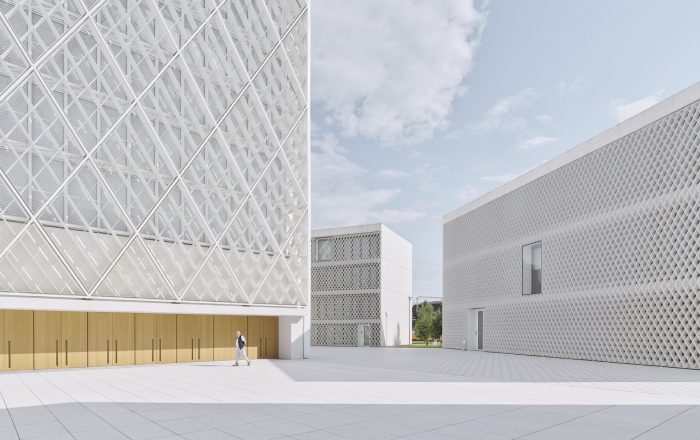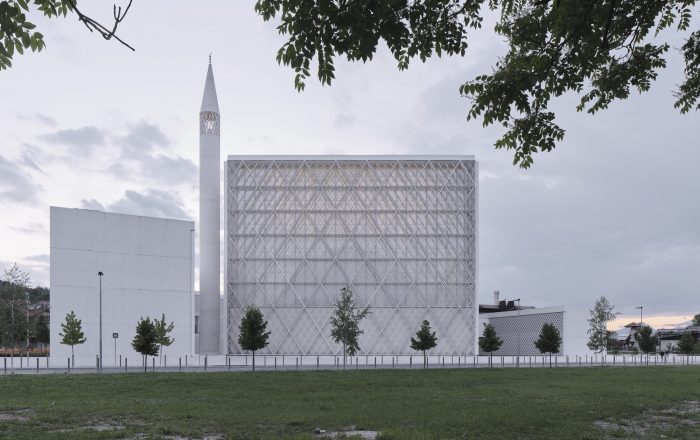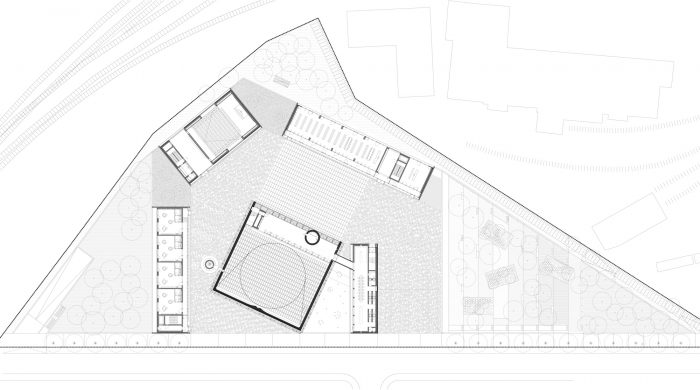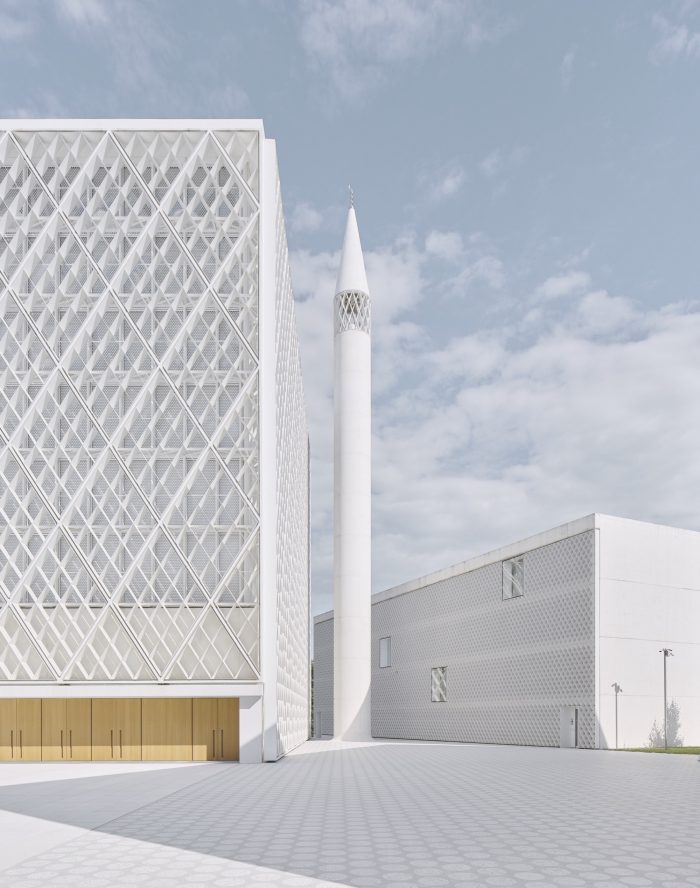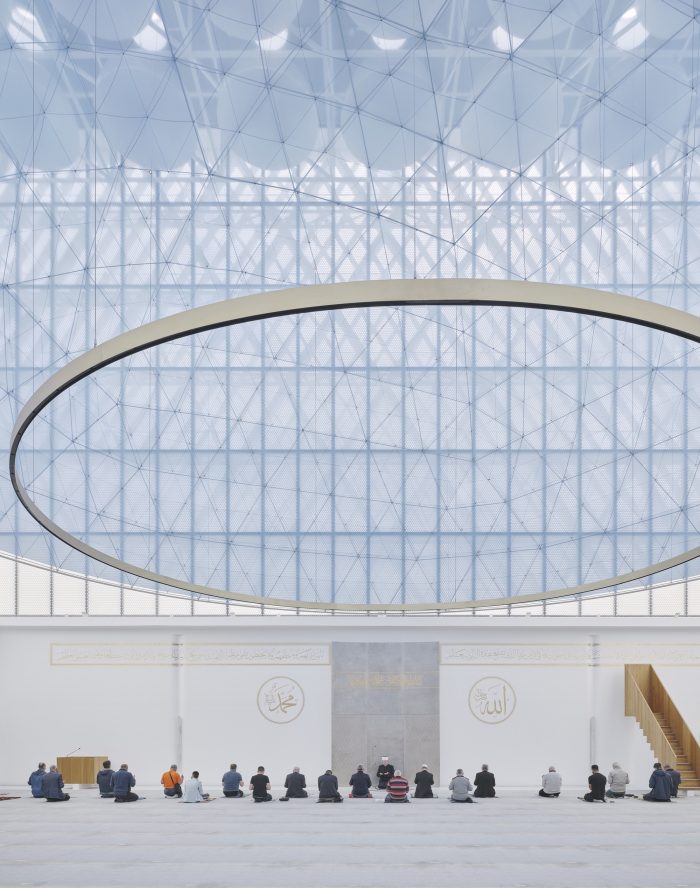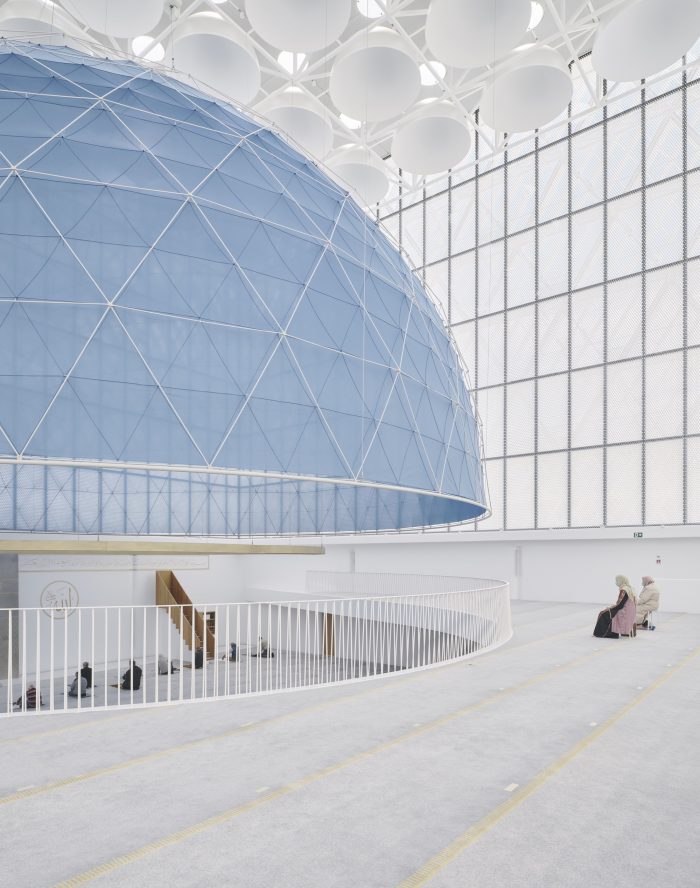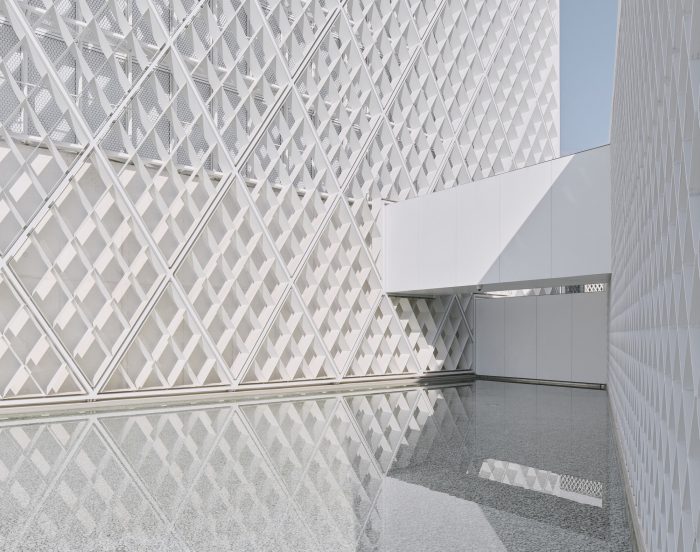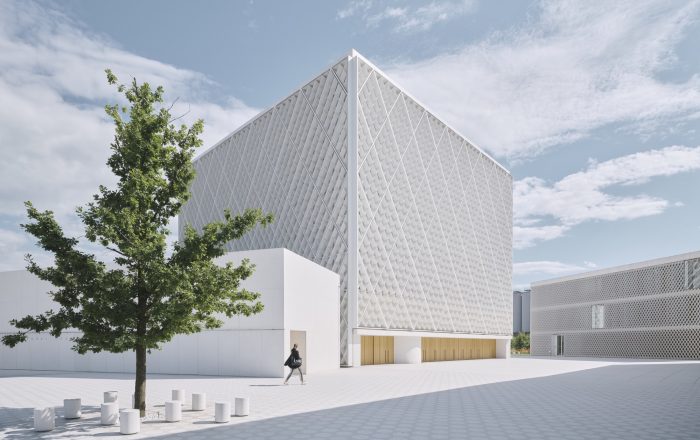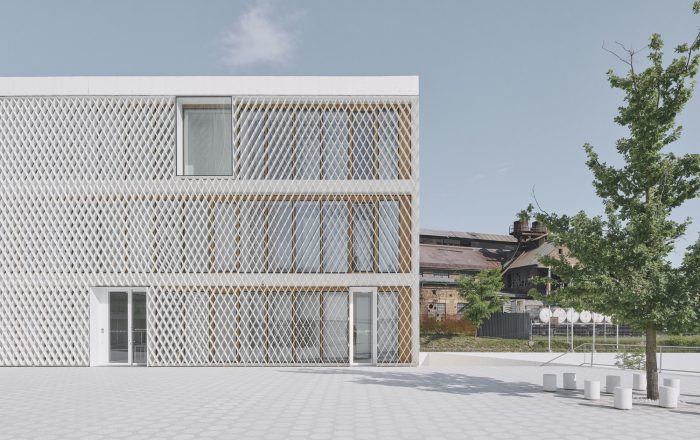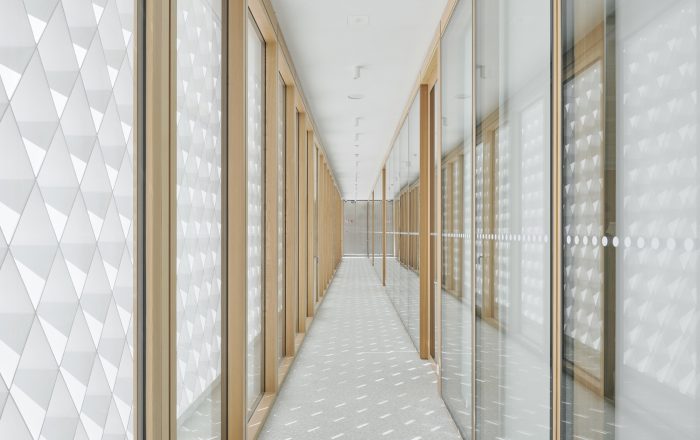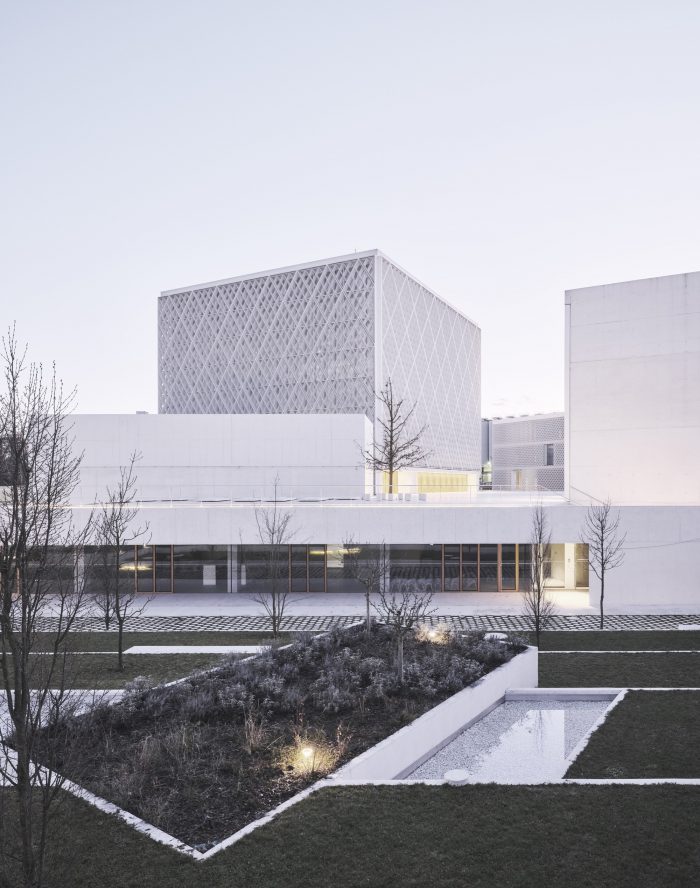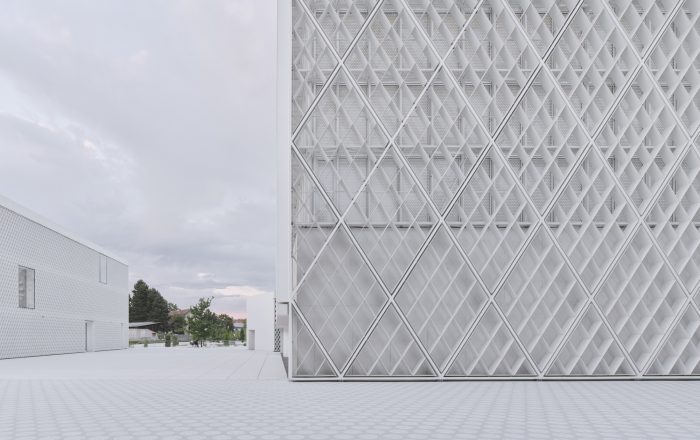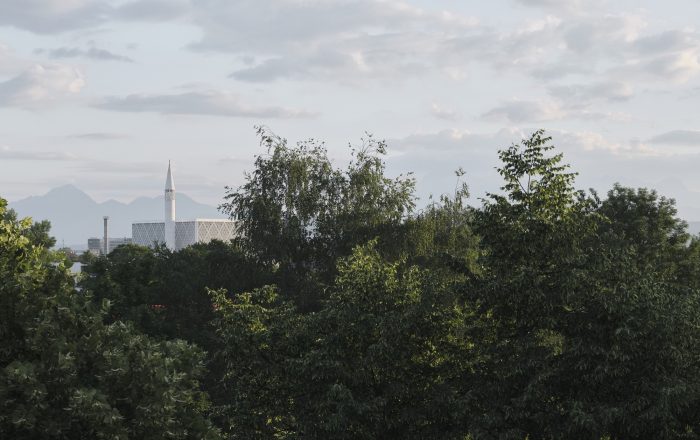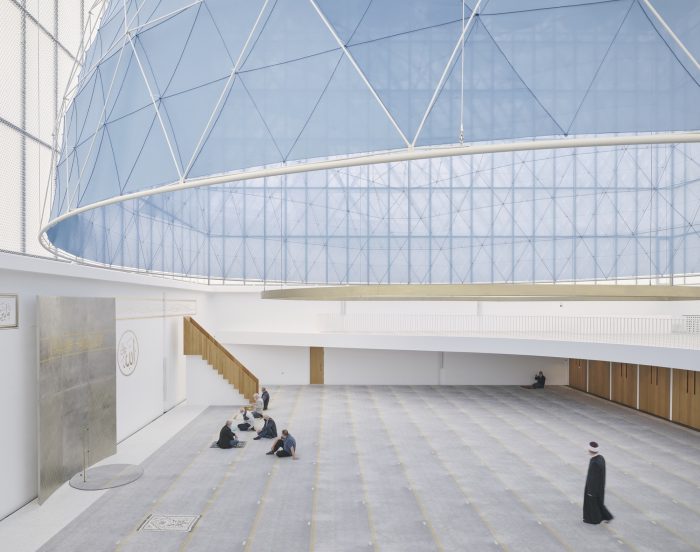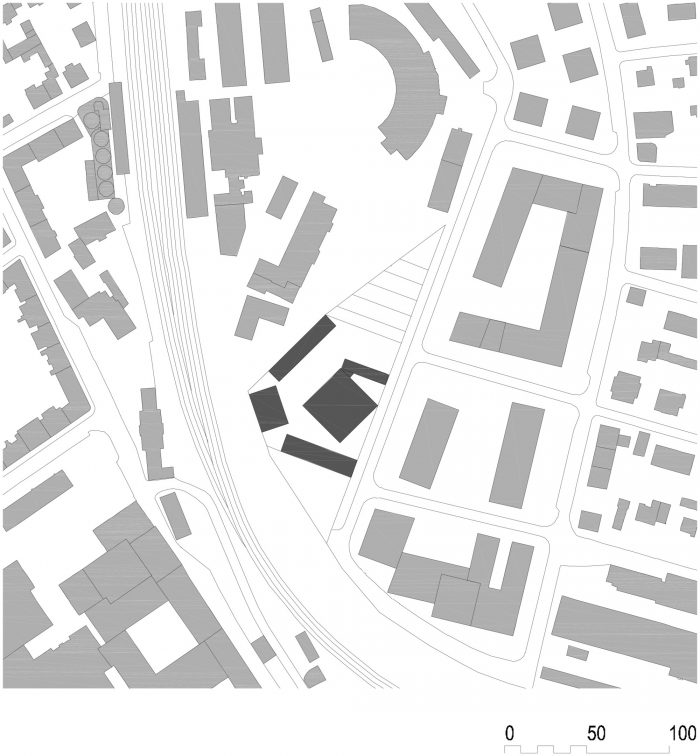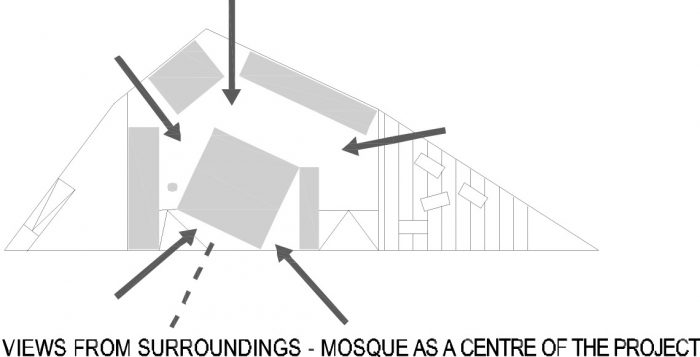伊斯兰宗教文化中心新址的 “特殊性 “恰恰在于它完全没有 “特殊性”–这个地区靠近市中心,但却被废弃和遗忘,处于脆弱的未开发状态,城市前景不明。就像其历史上的前辈–19世纪萨拉热窝清真寺就是一个例子,由富有的捐赠者建造的清真寺建筑群是城市新地区发展的起点和 “种子”,新的建筑群成为卢布尔雅那这个地区的一个例子。
The ‘specificity’ of the new location for the Islamic Religious and Cultural Centre is precisely its complete lack of ‘specificity’ – an area that is near the city centre, but abandoned and forgotten, in a fragile undeveloped state, with an uncertain urban future. Much like its historical predecessors – the case of Sarajevo mosques during 19th century being a nearby example, where mosque complexes – built by rich donors – were the starting points, the ‘seeds’ for the development of the new parts of the city, the new complex becomes one such thing for this part of Ljubljana.
该中心的计划包括一个宗教学校建筑,一个文化和办公计划,一个社区员工的公寓楼,一个餐厅,以及清真寺,这是斯洛文尼亚第一个建成的清真寺,所有这些都由地下室的停车场支持。
The programme of the centre consists of a religious school building, a cultural and office programme, an apartment building for the employees of the community, a restaurant, as well as the mosque, the first one to be built in Slovenia, all of them supported by car parking in the basement.
该中心的新建筑被定位为独立的实体,独立的建筑围绕着中心广场区域,中心有一座清真寺。它们是简单的体量,始终以各自的方案面向 “外部 “世界,同时围绕着清真寺建筑,并允许通过它们之间的空隙从四面八方向清真寺看去。
The new buildings of the centre are positioned as separate entities, autonomous buildings surrounding the central square area with a mosque in the centre of it. They are simple volumes, oriented always towards the ‘outside’ world with their respective programmes, simultaneously surrounding the mosque building and allowing views towards it form all sides through the gaps in-between them.
清真寺位于广场上,并完全向广场开放,以便在大型聚会时将祈祷空间向外延伸,是新建筑群的核心元素。它没有遵循明显的历史先例,也没有遵循最近的明显的标志性例子,而是被设想成一个钢结构–一个32/32/24米的盒子,由1米(45厘米)深、只有2(8厘米)厚的钢格子构筑而成,下半部分用白色混凝土填充,上半部分用透明玻璃填充,让阳光洒满内部空间。
The mosque, sitting on and opening fully towards the square to allow for extension of the prayer space on the outside during large gatherings of congregation, is the central element of the new complex. Rather than following obvious historical precedents, as well as the recent iconographically obvious examples, it is conceived as a steel structure – a 32/32/24 metre box constructed of 1-meter (45cm) deep and only 2 (8cm) centimetre thick steel latticework, filled with white concrete on the lower part, and transparent glass on the upper part, allowing for the sun to flood the interior space.
穹顶 –清真寺的核心元素–不是顶在空间上,而是悬挂在其内部。作为历史实例中天空的代表–它由透明的蓝色纺织品制成,这是一种最轻薄、最脆弱的材料,这种材料在伊斯兰教中有着悠久而丰富的历史–从卡巴的Kiswah开始,到伊朗的可移动帐篷清真寺。
The cupola – the central element of the mosque – rather than topping the space, hangs suspended within its interior. As a representation of the sky in historical examples – it is made of transparent blue textile, the flimsiest and most fragile of materials, the material which in Islam has a long and rich history – starting from the Kiswah of Kaaba to the portable tent-mosques of Iran.
建筑师:Bevk Perović arhitekti
占地面积: 14080 m²
年份:2020年
摄影:David Schreyer
设计团队:Matija Bevk、Vasa J. Perović、Christophe Riss、Ida Sedušak、Tina Marn、Andrej Ukmar、Irene Salord、Rok Gerbec、Blaz Goričan、Urban Petranovič、Davorin Počivašek、Maša Kovač。
客户:斯洛文尼亚共和国伊斯兰社区、卢布尔雅那市。
国家:斯洛文尼亚Architects: Bevk Perović arhitekti
Area: 14080 m²
Year: 2020
Photographs: David Schreyer
Design Team:Matija Bevk, Vasa J. Perović, Christophe Riss, Ida Sedušak, Tina Marn, Andrej Ukmar, Irene Salord, Rok Gerbec, Blaz Goričan, Urban Petranovič, Davorin Počivašek, Maša Kovač
Clients:Islamic Community in the Republic of Slovenia, The City of Ljubljana
Country:Slovenia


